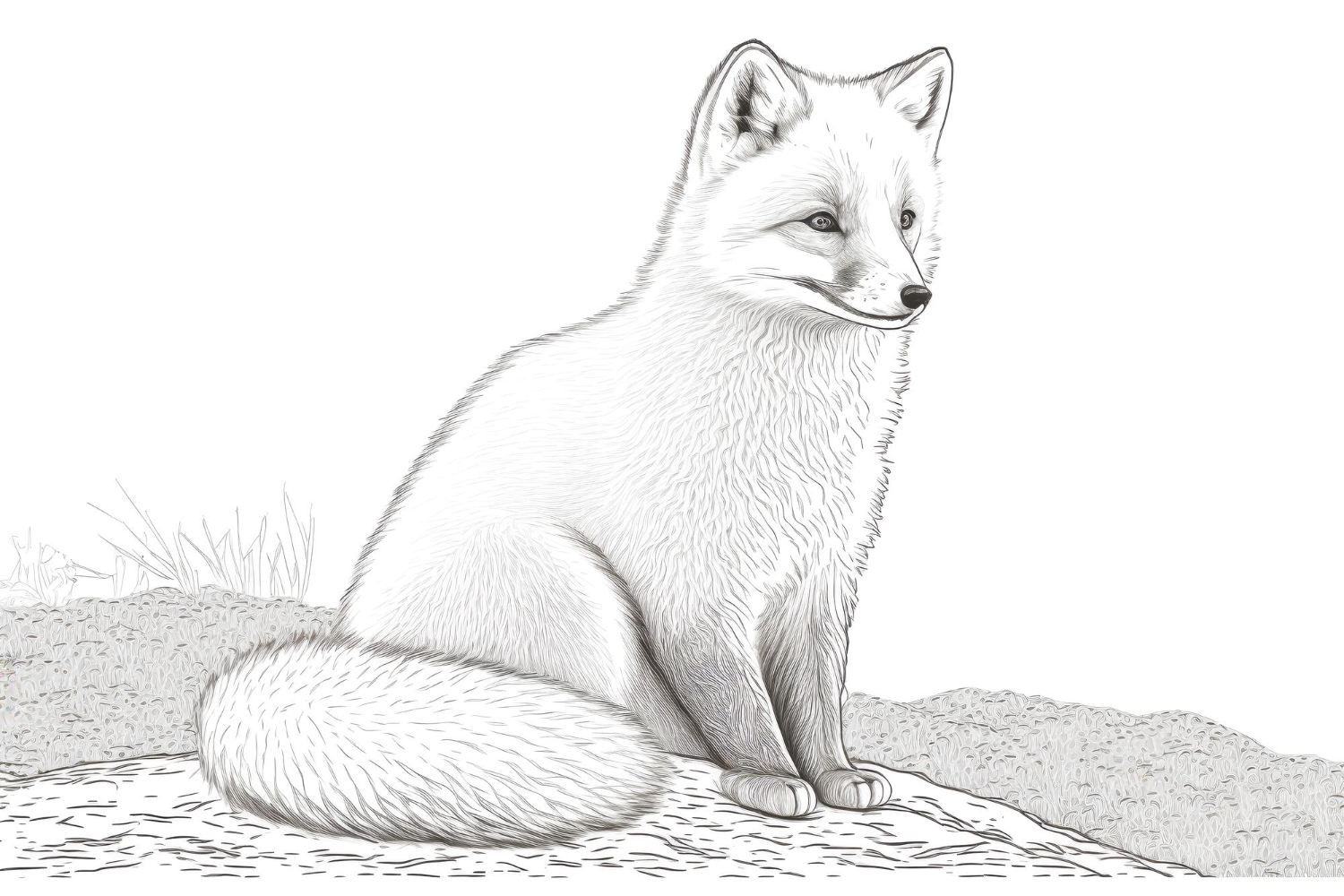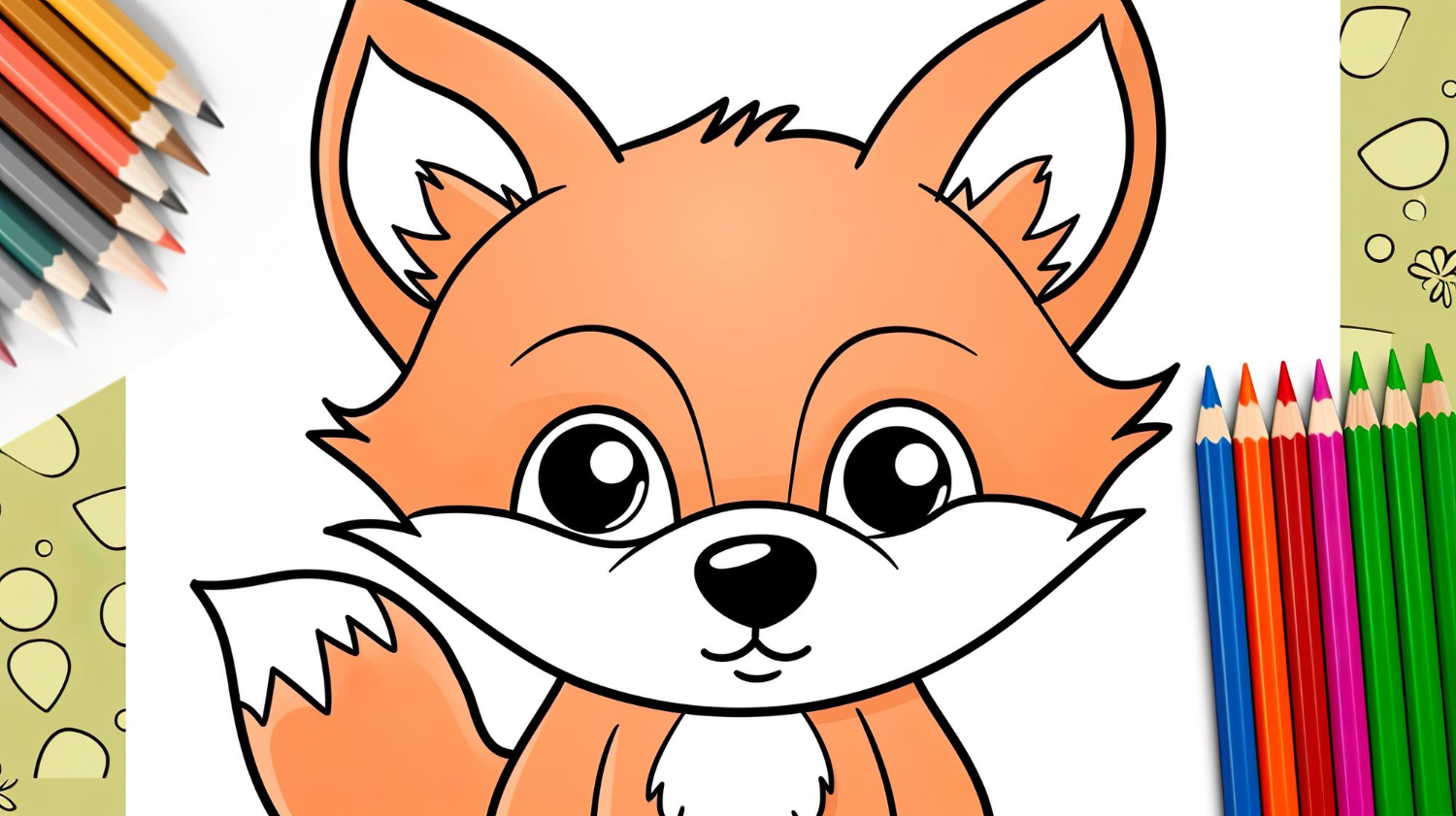If you are passionate about drawing and want to get started with animal drawing, why not start by learning how to draw a fox? This fascinating animal, with its flamboyant red coat and natural grace, is an ideal subject for improving your drawing skills.
Learn to observe basic shapes
Before you start drawing a fox, it is essential to learn to observe the basic shapes that make it up. By using circles, ovals and straight lines, you can create a solid structure to build on to represent this magnificent animal. Foxes have an elegant, slim figure, with a triangular head and pointed ears. So start by drawing a circle to represent the head, followed by an oval for the body and two other circles for the ears.
Add the characteristic details of the fox
Once you’ve established the main shapes, it’s time to add the fox’s signature details. Eyes, nose, mouth and ears are essential elements to bring your drawing to life. For the eyes, draw two small ovals inside the head, leaving space for the pupils. Next, draw a small triangle for the nose and a curved line to represent the mouth. Don’t forget to include whiskers, which are another distinctive feature of foxes. For the ears, add small pointed triangles above the head.
Give realism to your drawing
Now that you’ve drawn the basic shapes and added the essential details, it’s time to add realism to your drawing. Foxes have soft, dense coats, with color variations ranging from bright red to creamy white. To represent this, use soft, light strokes to create a realistic fur texture. Pay attention to the different colored areas on the fox’s body and use appropriate pencil shades to represent them. Don’t hesitate to refer to images of real foxes to help you make your drawing even more faithful to reality.
Playing with shadows and lights
To give depth and dimension to your drawing, it is important to play with shadows and lights. Foxes have darker areas, like the tips of their ears and the tip of their tail. Use stronger lines or darker pencils to represent these shaded areas. Likewise, use lighter strokes or lighter pencils to depict lighter areas of fur, such as the belly and chin. By adding these tonal variations, you will bring your drawing to life and make it more realistic.
Express your creativity
Even if you follow these steps to draw a fox, don’t forget to express your own style and creativity. Each artist has their own interpretation and style, so feel free to add personalized elements to your drawing. You can add a background to contextualize your fox, or even add decorative patterns to its fur. Let your imagination soar and have fun bringing your fox to life on paper.
The benefits of animal drawing for personal development
Drawing is much more than just an artistic activity. It is a form of expression that can have a profound impact on our personal development and well-being. When we choose animal drawing as our area of expertise, the benefits are multiplied.
Animal drawing, in particular that of the fox, allows us to cultivate patience. The complex and detailed nature of animals requires careful observation and sustained attention. The artist must take the time to understand each curve, each detail of the coat, and each characteristic expression of the animal.
Additionally, this art form encourages connection with nature. Animals, like the fox, remind us of the beauty and diversity of the natural world. By drawing these creatures, artists can feel a deeper connection to the environment, strengthening their respect and admiration for wildlife.
Animal drawing is also a powerful way to release emotions. Each pencil stroke, each choice of color, each added detail, is a projection of the artist’s feelings and emotions. By representing the fox, for example, the artist can express the freedom, cunning or serenity that this animal evokes.
Finally, the art of animal drawing can stimulate creativity in a unique way. By exploring different techniques and styles, the artist can discover new ways of interpreting and representing the world around them. It’s a never-ending adventure, where each creation opens the door to new possibilities and new challenges.

The emotional dimension of the fox in art
The fox, much more than a simple creature of nature, is also an inexhaustible source of inspiration in the world of art. Often depicted with mystery and enigma, he embodies emotions and themes that transcend the simple act of drawing.
The fox, by its appearance and gait, is often associated with cunning and intelligence. In many cultures, he is seen as an intermediary between the human world and that of spirits, a messenger or spiritual guide. Drawing a fox is therefore also exploring these spiritual and mythological dimensions. The artist who examines this creature can thus seek to capture not only its physical form, but also its emotional essence.
It is also interesting to note how the fox evokes contrasting feelings. For some, it embodies freedom, wild life far from the constraints of civilization. For others, it evokes solitude, a being who wanders alone in the vast expanses of nature. Capturing this duality in art requires real introspection on the part of the artist. The fox then becomes a mirror, reflecting the internal emotions of the person who draws it.
The choice of colors when depicting the fox is also crucial in conveying these emotions. A bright red fox can evoke passion, energy and vitality, while a fox in softer, pastel hues can symbolize gentleness, reverie or melancholy.
But beyond these symbolisms, choosing the fox as an artistic subject also means accepting to confront one’s own emotions. Because each line, each pencil stroke, each shade of color is a reflection of the artist’s feelings towards this majestic creature. Each drawing thus becomes an emotional journey, a quest for meaning and expression.












